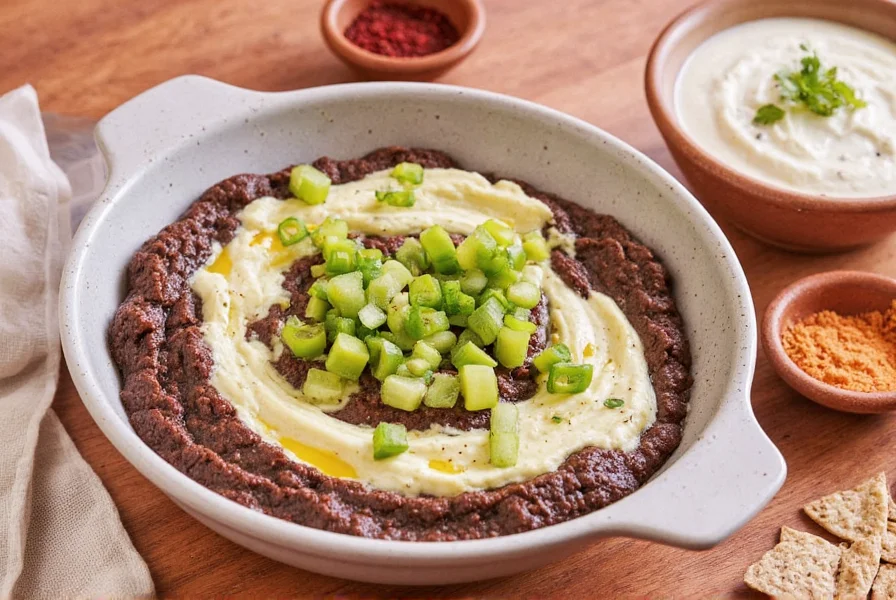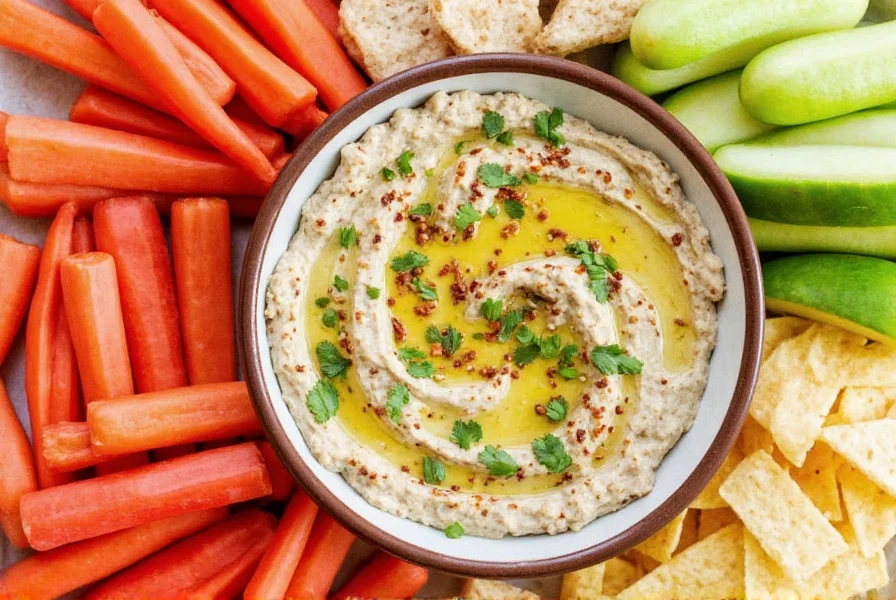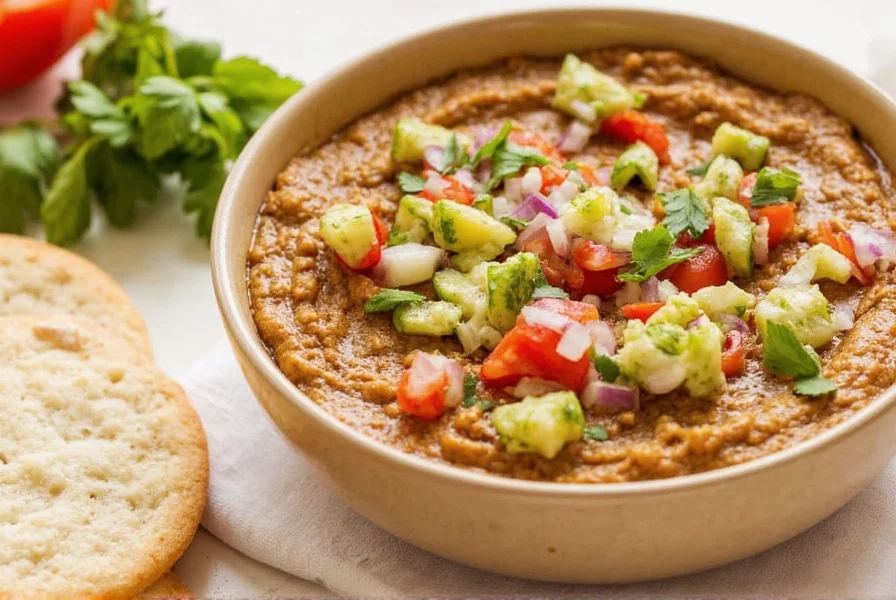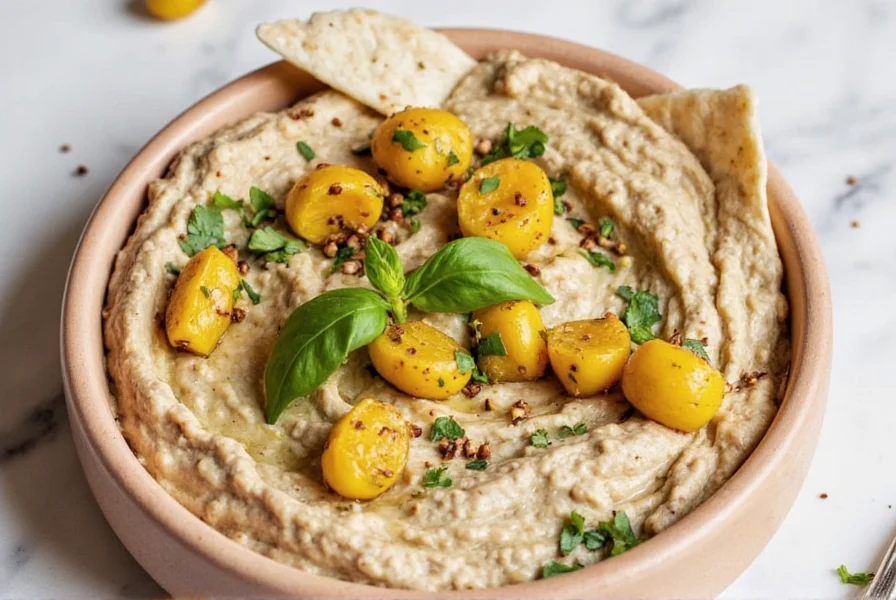Creating authentic eggplant Mediterranean dip (baba ghanoush) at home is simple and rewarding. This traditional Middle Eastern dish features roasted eggplant blended with tahini, lemon, garlic, and olive oil for a smoky, creamy dip perfect for appetizers, sandwiches, and more. Follow this easy step-by-step recipe to make restaurant-quality dip in under 30 minutes.
Ingredients
- 2 large eggplants
- 1/4 cup tahini
- 2 tablespoons fresh lemon juice
- 2 cloves garlic, minced
- 3 tablespoons extra virgin olive oil
- 1/2 teaspoon cumin
- 1/4 teaspoon smoked paprika (optional)
- Salt to taste
Step-by-Step Instructions
- Roast the eggplants: Preheat oven to 400°F (200°C). Pierce eggplants with a fork and place on a baking sheet. Roast for 45-60 minutes until skin is charred and flesh is very soft. Alternatively, char directly over a gas flame for deeper smokiness.
- Cool and drain: Let eggplants cool for 15 minutes. Slice in half, scoop out flesh into a colander, and let drain for 10 minutes to remove excess moisture.
- Blend ingredients: In a food processor, combine eggplant flesh, tahini, lemon juice, garlic, olive oil, cumin, and salt. Process until smooth (1-2 minutes), scraping sides as needed.
- Adjust seasoning: Taste and adjust salt, lemon, or cumin. For extra smokiness, add 1/4 tsp smoked paprika.
- Rest and serve: Transfer to a bowl, cover, and refrigerate for at least 2 hours to let flavors meld. Garnish with olive oil and paprika before serving.

| Brand | Tahini Content | Oil Type | Garlic Level | Best For | Price Range |
|---|---|---|---|---|---|
| Sabra | Moderate | Canola Oil | Low | Snacking | $ |
| Hope Foods | High | Extra Virgin Olive Oil | Moderate | Cooking & Marinating | $$ |
| Ziyad | Medium | Canola Oil | High | Strong Garlic Lovers | $ |
| 365 Everyday Value | Low | Vegetable Oil | Low | Budget-Friendly Snacking | $ |
| Kalio Organics | Very High | Organic Olive Oil | Moderate | Organic Enthusiasts | $$$ |
Pro Tips for Perfect Dip
- Roasting method matters: Charred eggplant skin creates authentic smokiness. Use a gas stove flame for best results.
- Drain excess moisture: Squeezing water from roasted eggplant prevents a watery dip.
- Chill before serving: Resting 2+ hours allows flavors to develop fully.
- Adjust texture: Add 1 tsp water or olive oil if too thick.
Top 5 Creative Uses for Your Dip
- Sandwich spread: Mix with hummus for smoky turkey or falafel wraps.
- Grill marinade: Brush on chicken or lamb before cooking for tender, flavorful results.
- Pasta enhancer: Blend with tomato sauce for a rich, smoky pasta topping.
- Baked potato topping: Replace sour cream with a dollop for Mediterranean-style potatoes.
- Breakfast boost: Spread on toast with fried eggs or use as shakshuka base.

Frequently Asked Questions
What's the difference between baba ghanoush and moutabal?
While often used interchangeably, baba ghanoush typically has more tahini and garlic, while moutabal emphasizes smokiness from thoroughly charred eggplant. Both are variations of eggplant Mediterranean dip with similar ingredients but slightly different proportions.
How is eggplant Mediterranean dip different from hummus?
The main difference is the base ingredient—hummus uses chickpeas while eggplant Mediterranean dip uses roasted eggplant. This gives the dip a distinctly smoky flavor profile compared to hummus's nuttier, earthier taste. Eggplant dip tends to be creamier with more complex flavor layering due to the roasting process.
Is eggplant Mediterranean dip healthy?
Yes! It's rich in fiber, healthy fats, and antioxidants from eggplant. The tahini provides calcium and healthy fats, while garlic and lemon juice add vitamins and digestive benefits. Just watch portion sizes as olive oil and tahini contribute to its richness.
Can I use eggplant Mediterranean dip as a spice alternative?
Absolutely. It works as a ready-made flavor base that replaces multiple spices at once. For dishes requiring smokiness, earthiness, and creaminess (like stews or roasted vegetables), it substitutes dry spice blends while adding moisture and texture. Use 1-2 tablespoons per serving as a starting point.
What are the best dishes to pair with eggplant Mediterranean dip?
Beyond traditional pita and vegetables, try it with grilled lamb chops, falafel, roasted beets, or Mediterranean-inspired sandwiches. It pairs exceptionally well with lemon, mint, or za'atar. For breakfast, spread it on toast with a fried egg or use it as a base for shakshuka.
Can I freeze eggplant dip?
Absolutely. Freeze in small portions (ice cube trays work well) for up to 3 months. Thaw in the fridge overnight and stir well before use. Add a splash of olive oil or lemon juice after thawing to restore texture.
How long does it last in the fridge?
Unopened store-bought dip lasts up to 3–4 weeks. Once opened, consume within 7–10 days. Homemade versions typically last 5-7 days. Always keep it in an airtight container with a thin layer of olive oil on top to prevent oxidation.
Is eggplant Mediterranean dip vegan and gluten-free?
Traditional recipes are both vegan and naturally gluten-free, making it an excellent option for various dietary needs. Always check store-bought labels for potential additives or cross-contamination warnings if you have severe allergies or strict dietary requirements.
What if I want to make my own?
Follow the step-by-step recipe above! Simply roast an eggplant (char the skin over open flame or broil until soft), scoop out the flesh, and blend with tahini, fresh lemon juice, garlic, high-quality olive oil, and a pinch of cumin or smoked paprika. For best results, let it rest in the refrigerator for at least 2 hours before serving to allow flavors to meld.
Can I use eggplant Mediterranean dip as a marinade?
Yes! Its creamy texture helps it cling to proteins better than dry rubs. Mix equal parts dip and olive oil, add extra lemon juice and herbs, then marinate chicken, lamb, or firm vegetables for 2-4 hours. The enzymes in the eggplant help tenderize while imparting deep, complex flavors.
Conclusion
Eggplant Mediterranean dip isn't just a snack—it's a versatile culinary tool that transforms simple dishes into extraordinary meals. Whether you're making it from scratch or choosing a quality store-bought version, this smoky, creamy dip delivers authentic Middle Eastern flavor with minimal effort. Keep a jar in your fridge and discover endless ways to elevate your everyday cooking.












 浙公网安备
33010002000092号
浙公网安备
33010002000092号 浙B2-20120091-4
浙B2-20120091-4